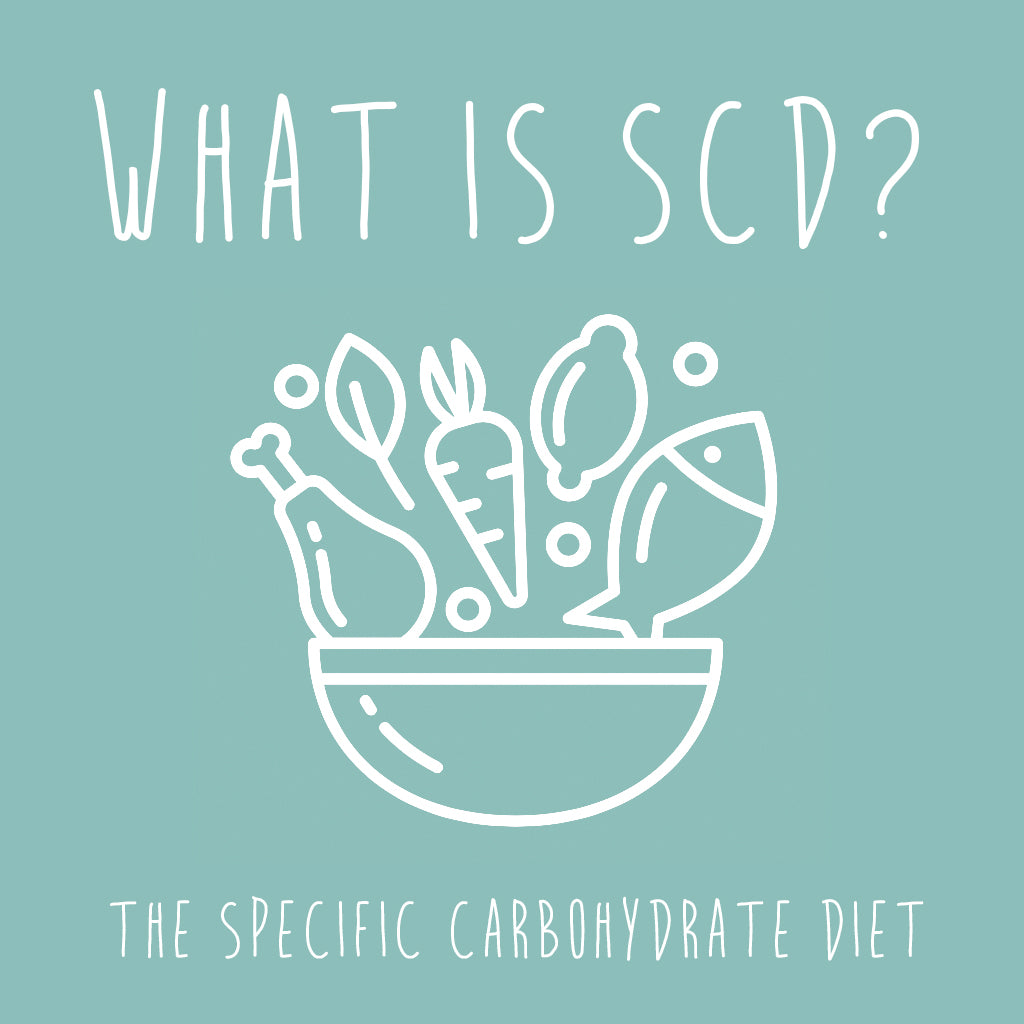SCD Diet
Overview:
The SCD diet is a nutritionally complete grain free diet that is low in both sugar and lactose. It was developed by Dr. Sidney Haas, a pediatrician, in the 1920’s as treatment for celiac disease. “Breaking the Vicious Cycle” was written by Elaine Gottschall in 1987 after the SCD Diet improved daughter’s inflammatory bowl disease. It has also been show to help with Crohn’s disease, ulcerative colitis, celiac disease, diverticulitis, cystic fibrosis, and chronic diarrhea, as well as the various gastrointestinal symptoms that some children with autism have.
Per WebMD, “The theory behind the Specific Carbohydrate Diet is that certain carbohydrates are not fully digested, so they remain in the gut and must be broken down by the bacteria there. This can cause an overgrowth of harmful bacteria, and waste products of the digestion process can set off a chain reaction, or “vicious cycle,” of irritation in the intestines.
By limiting your carbohydrates to only ones that are very easily digested, the idea is that there will be no undigested carbohydrates left over to cause overgrowth of bad bacteria and set off the chain reaction leading to irritation.”
Directions:
Step 1:
Discuss this diet with your child’s doctor before starting it.
The book “Breaking the Vicious Cycle” recommends an introductory period where you only eat a few approved foods for 2-5 days and then slowly add items in stages.
Step 2:
Follow through steps 2-5 of the SCD diet at your own pace. This is your journey and you can go as slow as needed. View allowed foods for each stage here.
Step 3:
“Illegal” food reintroduction is done at this point (optional). You may decide to never introduce an illegal food for fear of set backs; thats okay! This is an optional step and is at your discretion. You can choose which foods to reintroduce, if any, and when. Just remember that if you choose to reintroduce various foods, do so vey slowly.
Foods to avoid:
- Sugar, molasses, maple syrup, sucrose, processed fructose including high-fructose corn syrup or any processed sugar
- All grain including corn, wheat, wheat germ, barley, oats, rice and others. This includes bread, pasta and baked goods made with grain-based flour
- Canned vegetables with added ingredients
- Some legumes
- Seaweed and seaweed byproducts.
- Starchy tubers such as potatoes, sweet potatoes, and turnips
- Canned and most processed meats
- Canola oil and commercial mayonnaise (because of the additives)
- All milk and milk products high in lactose such as mild cheddar, commercial yogurt, cream and sour cream, and ice cream
- Candy, chocolate and products that contain FOS (fructooligosaccharides)
Foods to eat:
- Meats without additives, poultry, fish shellfish and eggs
- Certain legumes, including dried navy beans, lentils, peas, split peas, unroasted cashews and peanutes in a shell, all-natural peanut butter and lima beans
- Dairy limited to cheeses such as cheddar, Colby, Swiss, dry curd cottage cheese; and homemade yogurt fermented for at least 24 hours
- Most fresh, frozen, raw or cooked vegetables and string beans
- Fresh, raw or cooked, frozen or dried fruits with no added sugar
- Most nuts and nut flours
- Most oils, teas, coffee, mustard, cider or white vinegar and juices with no additives or sugars
- Honey as a sweetener
Resources
SCD Recipes
You need to login or register to bookmark/favorite this content.










